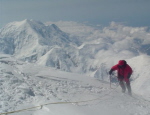|
|
 |
|
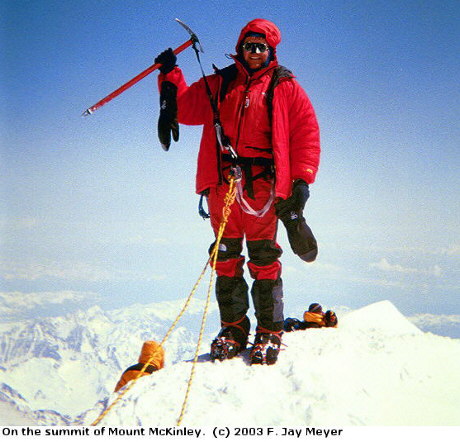
I tossed and turned most of the night before our summit attempt. And I suspect that I was not the only insomniac in camp
that night. We had plenty to think about, all the good and bad things that might happen the next day. And beyond the next
day, I also thought of my wife, family and future in mountaineering. It was cold, and at such high altitude sleep is
often fitful or elusive. And because it was June 12, close to the summer solstice, it remained light around the clock even
inside our tents. But despite this I did nod off a few times.
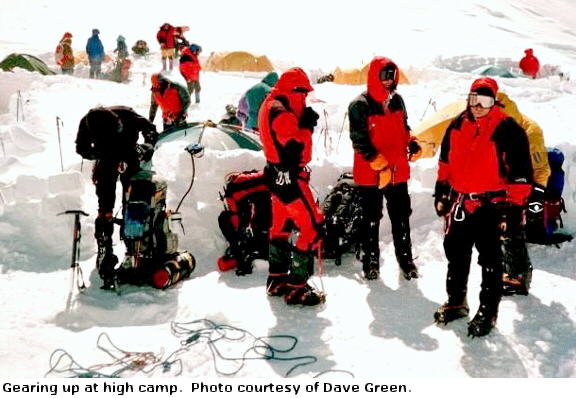
Early in the morning our guides gave the word and we began to suit up for our climb to the top of North America. At more
than 20,000'/6,000 m. the extreme cold would feel even colder, so in addition to our usual long underwear, insulating layers
and shells, we had extra protection for our feet, hands and faces. We carried insulated parkas for rest breaks, and as
survival gear if we were pinned down. As always on this trip, we would travel in roped teams so we put on harnesses with an
assortment of carabiners, slings and other technical gear. My hands became stiff from the cold when I strapped crampons onto
the overboots that covered my heavy plastic mountaineering boots. We gulped down a quick breakfast and warm drinks, and stowed
a few snacks and insulated water bottles in our packs. Then, we roped up and headed out of camp.

The first stage of our climb to the summit was a long ascending traverse to Denali Pass at 18,200'/5,550 m. This is perhaps
the most dangerous section of the entire route; many climbers have fallen down this slope into the crevasses at its base.
To protect against such falls, we clipped our ropes into a series of anchors in the snow. Because this was the first good
summit opportunity in more than a week, there were many teams behind us on the route. But there were only a few teams
ahead, so the trail of footsteps in the fresh snow was still narrow and unpacked. I struggled for a comfortable breathing
rhythm, finally settling on three or sometimes four breaths per step in a rapid, deep pant.
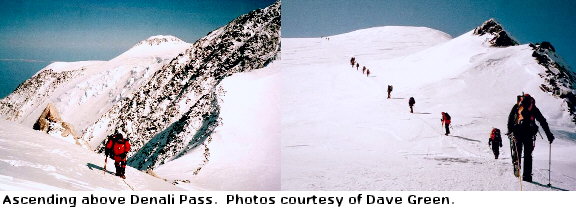

After about two hours, we reached Denali Pass and took a break. Close above us loomed the lower North Summit, and
to our east lay the upper Harper Glacier. Until then we had been climbing in cold shade, but when we reached the pass the
sun hit us and its warmth was welcome. We continued upward, on open slopes that were occasionally steep but far less exposed
than the traverse to the pass. A few hours later we walked over a prominence known as Archdeacon's Tower, and down onto a
plateau at the base of Pig Hill, the final slope below the summit. On the plateau we dropped our packs, put on our warm parkas
and regrouped to push up the steep hill and across the summit ridge.
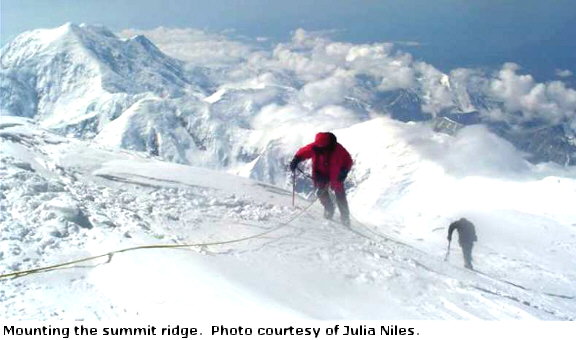
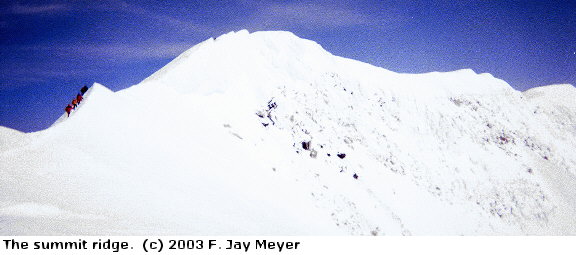
Pig Hill's north face is more than 700'/200 m. high, and we climbed it in a series of long slow switchbacks. When we
reached the ridge, we were still about 200'/60 m. below the summit. The jagged summit ridge was spectacular, and at our feet
McKinley's southwest face dropped away precipitously for thousands of feet. We snaked out along the ridge, clinging to
its crest as we crept upward. And then we were at the top - a mound of snow on the edge of an abyss, with the ridge leading
downward on either side.
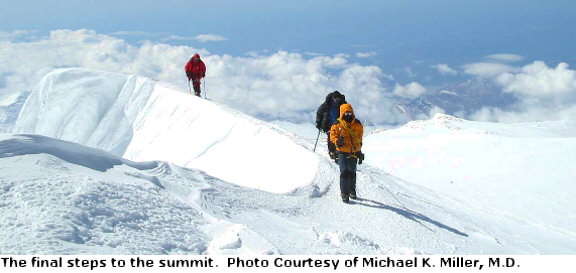
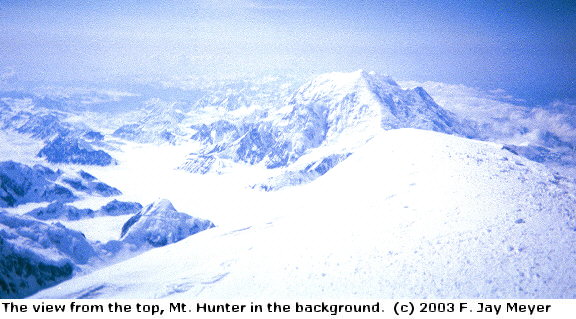
Unquestionably, each of us experienced a flood of emotions as we embraced and congratulated each other on reaching this
great high place. I was overjoyed for myself and also for my tentmate, who had come back to finish the job after a difficult
trip years earlier that had stalled at high camp. But we knew that we could not stay for long, so we kept busy taking pictures
of each other and the wonderful, clear view. On all sides we could see the snowy peaks and glaciers of Denali National Park.
After perhaps fifteen minutes we packed up our cameras, took a last look around and headed down.
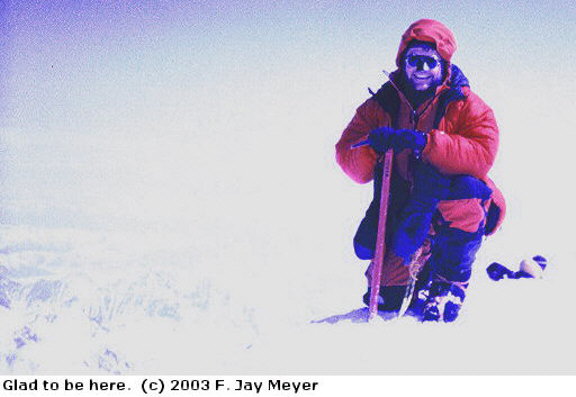

Rather than retracing our steps west along the ridge, we plunged directly down Pig Hill's north side. We descended quickly
and had to concentrate to stay on our feet in the soft snow. It was hard work, so when we reached our packs back on the plateau
we stopped to catch our breath, adjust our clothing and prepare for the long descent back to high camp. Other teams passed
by on their way to the summit. Then we shouldered our packs and headed over Archdeacon's Tower and down toward Denali Pass.
As we neared the pass the terrain steepened, and we had to be careful to avoid tired missteps. We were even more careful on
the long exposed traverse below Denali Pass, as we did not wish to join its list of victims. At last we walked slowly over
one last hill and into our high camp, 9 hours and 45 minutes after we had left that morning.
|
 |
|
|
|
|
|
 |
